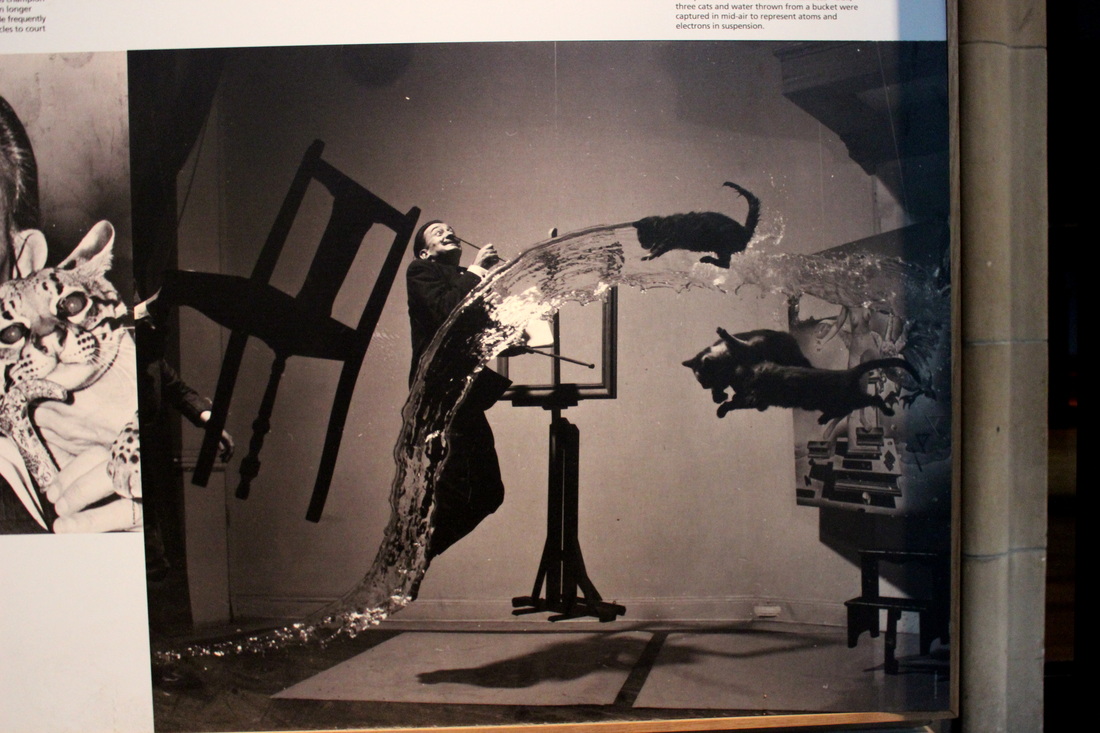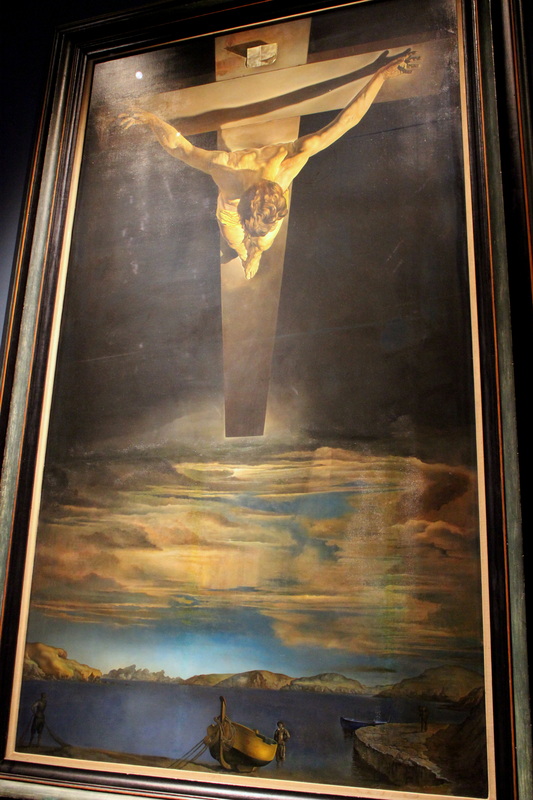|
I'm learning new things about Salvador Dali. Earlier this year, I visited the Museum Boijmans Van Beuningen in Rotterdam, and discovered a room full of Dali paintings which I had never seen before. When an artist is as famous and familiar, like Dali, they have assumed a public identity through their most famous and familiar paintings. The distintegration of time, the fragile stem-legged elephants haunting desolate yet colourful deserts, tigers leaping after flowing cloth. I've love the detail of Dali's Old Master-style, even and especially the way it slightly repulses me in its hyper-real depiction of unpleasant drooping textures and Surreal disturbia. I'd never seen his painting of a vision of Africa, lushly dark in black and red, showing the painter poised in the corner, drawing up his vision like a magician gesturing magic. Or his painting, 'The Great Paranoiac'. Feverish, fainting figures stumble across the canvas, reaching out weakly for support. A multitude of small bodies and stories make up the shape of Dali's own face, haunted and flickering. Looking into the painting, my eyes flicked back and forth between the different ways of seeing, the shivering figures and the great bowed head. It's a painting which personifies mental illness with ruthless clarity. So, Salvador Dali, surrealist and psychologist. But recently I found out that much more science permeates his work. At the Kelvingrove Art Gallery and Museum hangs 'Christ of St John of the Cross'. The painting is based on a 16th century drawing by St John of the Cross, a Spanish friar. In the painting Christ is pressed against a cross, suspended in darkness over a stretch of shimmering clouds and skies, sculpted sandy horizon. Dali based his painting on two dreams he had, and built physics and mathematics into its composition. His first dream gave him an idea for the shape of the figure and perspective, based on his imagination of the nucleus of an atom. Dali had studied physics and dreamt dreams of atoms in the wake of WWII. The discovery of the atomic nature of the universe held a special meaning for him.  "In 1950 I had a cosmic dream in which I saw in colour this image, which in my dream represents the nucleus of the atom. This nucleus afterwards took on a metaphysical meaning. I consider it to be the very unity of the Universe, Christ." He used the mathematical theories of Luca Pacioli to work out the striking proportions of the painting. Outside the room holding the painting, I also spied this intriguing photograph, 'Dali Atomicus'. It displays a remarkable timing of coordinated chaos. I wonder how many cats had to be flung. After I came home and did a little searching, I found out that 'Christ of St John of the Cross' is only the tip of the iceberg. There is much, much more to find out about Dali and his inspiration borne of maths, science, and religion.
0 Comments
Your comment will be posted after it is approved.
Leave a Reply. |
AuthorNot quite a blog, but things that I have written. Please note - these writings are unedited, for the purposes of flexing my fingers, and no doubt contain grammatical errors and carelessness of expression I wouldn't allow in professional writing. Categories
All
Archives
June 2021
|

 RSS Feed
RSS Feed
